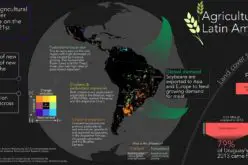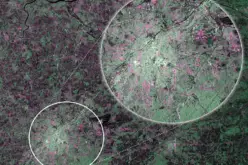A collaborative effort between the University of Nebraska–Lincoln (UNL) and the U.S. Department of Agriculture (USDA) has led to the development of the Soil Sample Planning Organizer Tool (SSPOT), a web-based soil sampling tool designed to enhance soil sampling strategies. This tool aims to assist producers and researchers in making informed decisions regarding soil sampling, thereby promoting effective soil management and sustainable agricultural practices.
Purpose and Functionality of SSPOT
The web-based soil sampling tool addresses common challenges in soil sampling, such as determining the optimal number and locations of samples within diverse and complex landscapes. By utilizing integrated algorithms, the tool guides users in selecting well-distributed sampling sites, ensuring comprehensive soil health assessments. This approach not only saves time and resources but also enhances the accuracy of soil analyses.
Users can define their specific Area of Interest (AOI) on the SSPOT map and choose between two “optimizer” algorithms. These algorithms leverage data from the USDA’s Soil Survey Geographic Database and customizable grids to recommend sampling locations that effectively capture soil variability within the selected area. Additionally, SSPOT allows users to tailor parameters to their specific needs and export the results for practical field applications.
Also Read – SoilGrids1km — Global Soil Information Based on Automated Mapping
Development and Collaboration
The inception of SSPOT is credited to Trenton Franz, a UNL professor of hydrogeophysics, who developed the initial algorithm and provided the scientific foundation for the tool. Collaborator Ben Cook contributed to the development of the original SSPOT prototype, and both played significant roles in creating the current user interface, with support from industry partner Esri, Inc.
The USDA’s Agricultural Research Service (ARS) and its Partnership for Data Innovations (PDI) led the testing and refinement of the software, incorporating valuable feedback from stakeholders throughout the process.
Virginia Jin, research leader with the ARS Agroecosystem Management Research Unit, highlighted the collaborative nature of the project, stating, “SSPOT is an example of collaborative science, where a multidisciplinary team of experts from academia, the federal government, and the private sector worked together to bring a vision to life.”
Implications for Soil Management
Effective soil management is crucial for understanding factors that influence soil productivity, including pH levels, nutrient variability, and organic carbon content. Routine soil sampling enables land managers and researchers to monitor these variables, informing best practices that enhance production while maintaining sustainability.
In the context of climate change and the increasing need to monitor agriculture’s carbon footprint, tools like this web-based soil sampling tool are invaluable for advancing precision farming techniques.
By streamlining the process of selecting sampling sites, SSPOT empowers users to conduct thorough soil analyses with greater efficiency. This capability is particularly beneficial for managing limited resources and labor, common constraints in agricultural operations.
The tool’s user-friendly interface and customizable features make it accessible to a broad range of users, from individual producers to large-scale researchers.
Also Read – Soil Quality Analysis for Smart and Sustainable Farming
Access and Availability
The web-based soil sampling tool, SSPOT, is readily accessible to the public and can be utilized by visiting its official platform. The platform’s design emphasizes ease of use, ensuring that both experts and non-experts can effectively employ the tool in their soil sampling endeavors.
Conclusion
The development of SSPOT represents a significant advancement in the field of soil science, offering a practical solution to optimize soil sampling strategies.
Through the collaborative efforts of UNL, USDA, and industry partners, this web-based soil sampling tool exemplifies the potential of interdisciplinary cooperation in addressing complex agricultural challenges.
As precision farming continues to evolve, innovations like SSPOT will play a pivotal role in promoting sustainable and efficient agricultural practices.












